Floor fleas : cat or dog fleas... jumping champions !
Have you noticed fleas in your home recently ? Are they starting to invade your home and you don't know where to start ? An invasion of floor fleas can become complicated if you don't act quickly. In this dossier, you'll find all the answers and products you need to combat this invasive insect naturally.
|
I would like to |
|---|
Latin name : Ctenocephalides felis
Order : Siphonaptera
Family : Pulicidae
Size : 1 to 8 mm
Location : any habitat
Period : All year round
General information on the flea
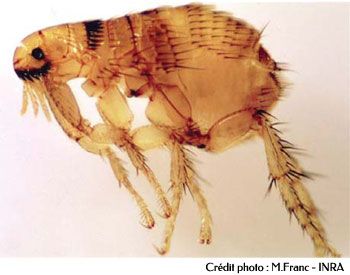
The first description of the flea dates back to 1400 BC! The 2,000 known species belong to the order Siphonaptera.
Measuring just a few millimetres in length, the flea's robust hind legs make it a champion jumper in terms of both length (40 cm) and height (20 cm).
Its legs, with spines grouped in series, enable it to cling firmly to its host.
Its body, compressed on either side, allows it to move easily between the hairs or fur of its host. As it does not like light, it lives mainly deep in the fur.
It is an ectoparasite (it lives on the body surface of a living being), sucking the blood of mammals or birds.
It likes temperatures between 18 and 27°C and humidity levels of around 70%.
The ideal conditions for its development are therefore warm, humid periods such as spring or autumn.
The flea dies when exposed for an hour to a temperature > 39°C.
Adult fleas can live for 6 to 12 months, and larvae can survive for up to 2 months without food.
Its mouth apparatus is made up of 3 stylets: the median, hollow one, which allows blood to be sucked, while the other 2 allow saliva (anti-coagulant) to be injected.
Irritation is caused by the host's immune system reacting to the substances present in the flea's salivary secretions.
The flea needs a host
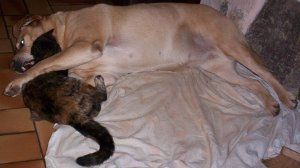
The human flea (Pulex irritans) has fortunately become extremely rare in our country.
It also infests pigs, foxes, badgers and hedgehogs.
In some rare countries, together with the rat flea (Xenopsylla chaeopsis), it can transmit the bubonic plague bacillus.
Dog and cat fleas can also transmit an intestinal parasite, Dipylidium caninum. It is therefore advisable to worm your pet regularly in addition to flea control.
The dog flea, Ctenocephalides canis, infests dogs and cats.
But the cat flea, Ctenocephalides felis, is the most common: it infests cats, of course, but also many European mammals such as dogs... and possibly man if he happens to be passing by!
Birds, both wild and domestic, are regular victims of fleas (infested nests). These include Ceratophyllus gallinae, the scourge of hen houses, and Dasypsyllus gallinulae, common in small birds.
Usually, fleas prefer to live on animals such as cats and dogs, but in the absence of their favourite animal, they can jump onto humans.
This situation arises, for example, if the pet is absent from the home for some time or in the event of a major infestation.
How does a flea locate its host in order to feed ?
Fleas locate their hosts using a highly specialised recognition system, called chemoreceptors, located on the antennae. These chemoreceptors are sensitive to various parameters :
- Olfaction
- Perception of heat
- Infrared radiation
- Day/night vision
- Chemo-olfactance (perception of specific molecules and odours)
- Vibration
Specific data (osmolarity, salinity, chemical composition) confirm to "suckers" like fleas that they are indeed sucking blood and can therefore feed. The precision of sensory perception is linked to the number of chemoreceptors. A flea that lives close to its host has very few antennular receptors (fewer than 50, compared with a mosquito or fly, which can have up to 5,000). These are also used for sexual purposes.
Pets = fleas, so be vigilant !
- If your pet scratches abnormally and sheds,
- If combing sessions reveal an increase in the flea population,
- If their excrement, a fine black dust on the skin, is visible and abundant when the hair is parted,
- If fleas are increasingly attacking people living in the house,
- If your cat or dog regularly goes outside the house when it's warm and humid.
What you need to know about fleas
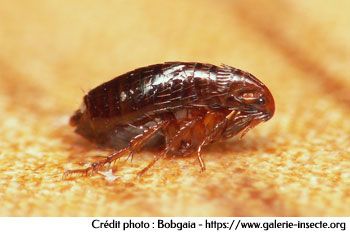
Floor fleasThere are various types of flea, all of which come from animals (cats, dogs, birds, rats, etc.). The cat flea (Ctenocephalides felis) is the most common species in our homes. Your pet is probably carrying fleas without you noticing.
The flea is a wingless insect that lives on a host (animal, human) and feeds on its blood. After sucking the blood, the flea irritates the skin, leaving a reddened area with a dark red spot in the centre. It mainly parasitises cats and dogs. However, in the absence of its preferred hosts, it can easily adapt to other hosts, such as you. It is important to be wary of it because it is a vector of disease (typhus, tapeworms, allergies, etc.). In rabbits, for example, it transmits myxomatosis.
Why is it called a "floor flea" ?
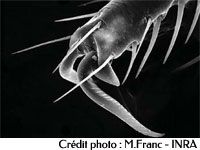
The flea lays its eggs on its host. The eggs can easily detach from the fur of a cat or dog and fall into the places visited by the pet : between the slats of a wooden floor, in the carpet, in its basket, on your sofa, etc. Under the right conditions, there can be a sudden, massive outbreak of "floor fleas".
In favourable conditions (heat + humidity), a flea larva reaches the adult stage in 2 to 3 weeks. In poor conditions (absence of a host, low temperatures), the cycle can last up to 6 months.
Flea populations generally peak towards the end of summer, when the temperature and humidity required for adult emergence are optimal.
A single female lays an average of 200 eggs over her lifetime. This means that adult fleas represent only 1% of the total flea population (99% are in the form of eggs or larvae). So it's not surprising that after a few days away from home, you find a "carpet" of fleas jumping up and down on your parquet or carpet.
The flea's development cycles
The flea has four development cycles: egg, larva, nymph and adult.
The length of the life cycle depends on the species, temperature, humidity and access to food.
If all the right conditions are met, a flea will reach the adult stage in two to three weeks. If not, it can take several months to develop.
The egg stageAfter each blood meal, the female flea lays four to eight round eggs, measuring around 0.5 mm, with a smooth shell, a whitish colour and a sticky texture.
Eggs laid on the animal do not remain there and fall off when the animal scratches itself.
Places often frequented by dogs (or cats) are very rich in eggs! In optimal conditions, the female can lay up to 25 eggs in 1 day.
She will lay around 800 eggs in her lifetime.
The larva stage
After 2 to 12 days, a larva (worm-like, white and hairy, 1 to 5 mm long) is born where the egg fell.
This larva is mobile. As it fears light, it takes refuge in preferably dark places. It is also sensitive to variations in humidity and temperature.
The larval stage lasts from 1 to 3 weeks, if conditions are favourable (18° to 27° and 70% relative humidity).
The larva is detricolous, which means that it feeds on adult flea excrement and animal faecal debris.
The larva can survive for up to two hundred days in unfavourable conditions, moving at distances of up to 30 cm per minute. The larva wraps itself around the nearest object, often the fibres of a carpet, to avoid falling victim to the hoover. The larva then weaves a cocoon and pupates.
The pupal stage
During the third stage of development, the larva covers itself with dust, fibres, grains of sand and organic debris. Under this covering, it weaves a cocoon using the silk provided by its labial glands.
In its cocoon, the larva is protected from all external aggressions: heat, desiccation, etc. It can therefore survive for several months without feeding.
Normally, the nymph develops in 1 to 2 weeks, but this state can last up to 1 year if conditions are unfavourable.
As soon as the pupa detects the presence of a host (animal or human) through vibrations, heat or a higher concentration of carbon dioxide (which occurs when a cat, dog or human passes by), it emerges from its cocoon and jumps onto the host to take a blood meal. The flea rapidly grows in size and takes on a lighter, reddish-brown colour.
This means you can very quickly be invaded by what is known as the floor flea. This is very common after a few weeks' absence (holidays) or in holiday homes.
The adult stage
See "General information on fleas" above.
- Try to keep your pet out of places where it will be difficult to eliminate fleas (bed, sofa, attic, etc.).
- Regularly wash or treat the area where your pet sleeps, especially fabrics or blankets.
- Vacuum regularly all the rooms or surfaces where your pet has been or is lying down. Don't forget the corners and underside of furniture and carpets. Pay particular attention to rugs, cushions, carpets and all surfaces with fibres, as larvae will cling to them. Avoid using sweepers, which tend to disperse the eggs.
- In the event of an infestation, don't hesitate to dispose of the hoover bag straight away: burn it or, after wrapping it in plastic, put it in the freezer.
Curative : treat the floor flea
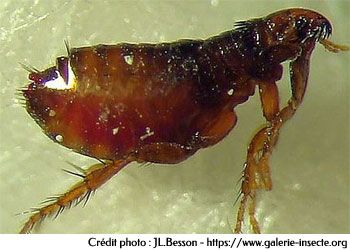
While foggers (a spray that creates an insecticide fog) or insecticide bombs may destroy adult fleas, they will not destroy the eggs.
In fact, neurotoxins have no effect on either the eggs or the larvae, which are well protected in their cocoons. To destroy eggs and larvae, you need a product with a "mechanical action" such as paraffin oil (which is the case with Tous Insectes Pistal) or potassium soap (which is the case with our 4J insecticide). The egg or larva must also be in physical contact with the product.
Depending on the degree of infestation, various products are available.
1.The 1st thing to do is to treat your pet. As long as it is carrying fleas, you will continue to have fleas in your home. Here's the advice we can give you:
- Wash your pet regularly with a special anti-parasite shampoo.
- Comb your pet regularly (use a fine-toothed comb : either this one with 64 teeth or this one with 69 teeth), especially the nape of the neck and around the tail, after untangling the coat with a brush.
- As a preventive or curative treatment for your pets, you'll find a number of effective, natural products on our website in our "Protecting pets" section. These products are generally used at the start of the high-risk season, but for certain animals living permanently in heated rooms, it is sometimes necessary to treat throughout the year.
2. Then treat its environment with our 4J insecticide diluted at 5% : Everything can be treated: baskets, fabrics, blankets, kennels, etc. This is an important precaution, because adult fleas lay eggs on their host, which can fall and hatch in places where the animal lies down.
3. On any type of floor, if you're heavily invaded (hundreds of fleas jumping around), spray all surfaces with our ready-to-use 4J insecticide diluted to 5%. If you start treating large areas, prefer 4J concentrated insecticide (same product but in concentrated form). You make the dilution yourself: 5% pure product + 95% water.
For large treatment areas, a garden sprayer will be more effective and more practical than a vaporiser. All fleas affected by the insecticide must die immediately. Don't forget corners or the underside of furniture.
After this treatment, vacuum to remove the corpses, paying particular attention to rugs, cushions, carpets and all surfaces with fibres, as the larvae will cling to them. We advise you to wear a pair of boots when carrying out this operation, as fleas are likely to jump onto your legs!
Note : to make 5 litres of insecticide at 5% concentration, you need 250ml of concentrated 4J. This will enable you to treat around 50m². To treat 100m², you'll need a 500ml bottle. This insecticide is also available in 125ml (25m²) and 1 litre (200m²).
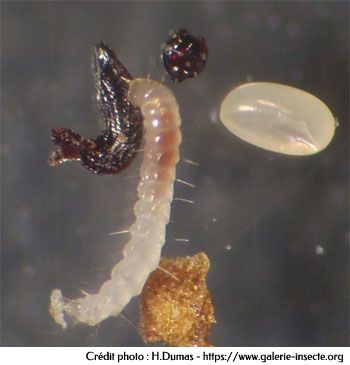
4. As the Aries All Insects aerosol is pressurised, it's ideal for reaching more difficult areas that you wouldn't be able to access with a sprayer or vaporiser.
5. Then use our Ecodoo insecticide aerosol to treat fragile fabrics and upholstery (carpets, rugs, sofas, armchairs, cushions, etc.).
6. On slatted parquet (with grooves) or other identical surfaces, a treatment with 4J insecticide diluted at 5% is also recommended. As flea larvae flee light and dryness, they take refuge in small nooks and crannies such as floor cracks (hence their name), but also behind and under furniture, under the edges of carpets, along skirting boards, in heating and ventilation ducts and in all places where the floor is shaded and damp.
7. For wooden floors, it's really important to treat the grooves, which generally contain dust. You can use a garden sprayer or a sprayer set to "jet" so that the entire groove is well impregnated with insecticide. The eggs and larvae must be coated with the product for it to take effect.
Don't sweep up the eggs, but vacuum them up to prevent them from spreading to the four corners of your home.
8. To be on the safe side, you can fumigate once the 4J insecticide treatment has been carried out. The Habitat fogger is perfect for this. This is an automatic insecticide dispenser based on active ingredients of plant origin (pyrethrum + geraniol), designed for basic treatment of the home. Highly volatile, the solution is deposited in the smallest nooks and crannies where parasites and insects live. Immediate and prolonged action, for up to 4 months. 3 different sizes are available: 75 ml for treatment of less than 15 m², 150 ml for treatment of less than 30 m². Lastly, 250 ml, for a treatment of more than 30 m².
The products you need against fleas
Step 1 - I make sure my pet is flea-free
Before you even start treating your rooms, protect your pet by removing all fleas. If you don't do this, fleas will inevitably still be jumping from its coat onto your armchairs or wooden floors. Several repellent products can help you do this. They come in the form of spray lotions, foam or powder dry shampoos or simply shampoos that you can wash off. Be careful, these products are sold as insect repellents. In other words, they do not destroy the insect. Their function is to chase them away from the animal using powerful plant-based active ingredients. If the invasion is too serious and the fleas won't go away, opt for a veterinary product.
Step 2 - Treating the surfaces of my home
Once your pet is flea-free (and this is often the key to success), you can treat your rooms with our insecticide products below :
Step 3 - I protect my pet from getting fleas again
This last step should not be neglected. It's essential and should be repeated from time to time if you don't want the fleas to come back. We offer collars, pipettes and insect repellent sprays, either geraniol-based or based on Margosa extract. Finally, don't forget to relieve itching with our soothing and deodorising STOP Scratch lotion made with natural plant extracts.
Customer experience
According to feedback from our customers who have followed this procedure, you can expect the chips to disappear completely in 1 or 2 treatments the following exchange of letters is interesting because it highlights a few points) :
Our customer : I wanted to let you know how delighted I am (let's hope it lasts!) with the flea treatment I've had in my house. In addition to the ease of use and the very pleasant smell, I haven't seen a single flea since yesterday. I've had them for 2 years and it's a real relief! I'm going to follow your advice and repeat the treatment in a fortnight's time.
Penn'ty Bio : After a treatment, you need to vacuum up any larvae that have not been killed. The carrier animal must either be treated correctly (see your vet or our products for treating dogs and dogs), or no longer enter.
Our customer : I first treated the small outbuilding (30 m²) that was most affected and the stone sheds around the garden with your insecticide diluted at 5%. A few days later, there were still fleas, but far fewer and smaller. I did a 2nd treatment at a slightly lower concentration (3%) to save money. A week later, even fewer fleas, but still small ones. I have the impression that it's new hatchings each time and that the product is less effective on the eggs. I still have enough product left to make 1 or 2 litres. What do you think and what do you recommend ?
Penn'ty Bio : There's something I don't understand. The flea cycle is as follows: after each blood meal, female fleas lay 4 to 8 eggs. The egg hatches after a few days and a larva emerges. The larva is not a parasite. It goes through 3 stages during which it feeds on organic debris, larval remains and dried blood found in the excretions of adult fleas. It then covers itself with dust, fibres and organic debris, and under this covering weaves a cocoon that partly protects it from insecticides. Favourable conditions encourage the emergence of fleas: vibrations, increased temperature and carbon dioxide concentrations. Adults then emerge immediately and the cycle can continue.
This means that either the treatment is insufficient and the larvae are not destroyed (larvae are only destroyed if they are physically wetted by the insecticide), or you have cats that return regularly to this outbuilding and bring back new fleas. A customer who called me yesterday treated her cats and then her flat with a 5% dilution of 4J insecticide. Result: she no longer has any fleas, but the carrier cat no longer comes home !
In the outbuilding, after a treatment, vacuum up any larvae (dead or alive) and prevent cats from returning. Normally, if you do this, your problem should have been solved with the 1st treatment ! If the cats don't come back in but you can't vacuum, because fleas can't reproduce any more, you'll end up getting them. If, on the other hand, you can't keep the cats out, there are only 2 solutions: use a radical insecticide treatment (a tablet you can get from a vet) or wait for the cold to stop the fleas' reproduction cycle !
Our customer : I used the rest of the product to treat my addiction again and 2 days later I vacuumed it as you advised. After that, the addiction remained closed. Since then, I've been home twice and I haven't seen any fleas jumping up and down on my legs like before, so it seems to have been resolved. I'm still going to wait for the cold of winter before opening it again and letting the cat in.
Customer testimonial on the use of our 4J flea repellent :
I'm taking the time to leave a comment here, because we thought we'd never get out of the flea trap, and it was out of desperation that we came to try this product. Here's the initial situation: our dog had been suffering from fleas for several months.
At first, out of conviction, I tried several methods to scare them away, using lavender and other essential oils, white vinegar, etc.... This seemed to limit the damage in winter, but we were never completely rid of them. In spring and summer, of course, the fleas multiplied. As I have "insect skin" ;), I got bitten a lot (my partner didn't :(), and I suppose our dog did too, judging by the increasing number we saw on his body, and the scratching.
After trying Fr*ntl*ne C*mb* pipettes to no avail (our dog was still full of fleas, with no noticeable effect), we did some more research and learned that many species of flea had developed resistance to the active molecule in Fr*ntl*ne. We then turned to Adv*c*te to treat our dog: immediate success! 2 months later, still no fleas on our dog :)! 1st victory! But there were still fleas in the flat (old parquet flooring in the 3 main rooms), so I was still bitten! 2 sessions of "Cl*m*nt Th*kan" foggers later, still fleas! Another search on the net: and there we find the penntybio website!
Let's get started : we put all our clothes in big bin bags with diatomaceous earth sprinkled on top (I don't know if this step had any effect...), waiting to wash them and gradually put them back in the flat (and put the first "batches" back in at 60°C / tumble dry / iron! :)).
After that, it was time for a big clean: vacuum everything, especially the skirting boards and parquet, then throw the vacuum bag in the bin. We bought a simple garden spray bottle, with a handle for spraying, at a DIY superstore like C*st*, for less than £10. We filled it with 4J concentrate diluted to 5%, as recommended by Penntybio. Rubber boots on + tropical mosquito spray on: we were armed ;)! We used the Ecodoo spray sold on this same website on wooden furniture (especially those that were quite 'porous' with lots of gaps!), fragile fabrics (leather...), non-washable backpacks/handbags, in short, anything that might have been used to transport or harbour fleas or their eggs/larvae... Then, after waiting 30 minutes for the vapours from the Ecodoo spray to dissipate (it's very strong, it's better to spray and then leave the room ;)), we came back with the garden sprayer filled with diluted 4J and sprayed meticulously, first all around the room (the skirting boards), then all over the floor, so that not a single cm2 of the floor had been in contact with the product, insisting on the cracks in the parquet, which I totally flooded !
Then, with the rest of the product from the vapo' (the doses indicated by penntybio per m2 are exact, we certainly didn't need less! ) and the 4-day spray already diluted to 5% purchased from the same site, we treated the last few surfaces, such as the car (we focused especially on the boot, where our dog stays when we travel, and on the floors) and possibly the areas at our parents' house where our dog was likely to have stayed for longer (but we did this more lightly, as there was no real infestation at our parents'/family's house...).
Then we left the whole thing to marinate for at least 24 hours, came back, aired it out and started by mopping the floors with a cloth that wasn't too damp (so as not to get too much product into the gaps), especially the smooth floors (tiles, etc) which were actually a bit slimy and even slippery (I'm telling you, we put a good dose of product everywhere ;)). Then the vacuum cleaner (this time the bag was thrown away again, and the next ones won't be thrown away but at least sprayed once with an ecodoo before being put in the vacuum cleaner), and a gradual return to normal, with the feeling that we'd almost prepared for a move (except for the kitchen cupboards, which we hardly touched as the dog only goes there to eat, and the floor is tiled, so there's less risk of infestation) !
I think you need to allow a good 2 days (9am-6pm) to treat a flat (60m² for us) properly (we also have a small 50m2 garden, we just cut back on the weeds and grass, so we didn't need to spray with insecticide for 4 days). For us in any case, the time it took to tidy up, put the washable textiles in a bag or straight into the machine for the most urgent items, clean, treat, re-clean, put back in place... it took us 48 hours, just the two of us. In terms of products, we needed (still for our 60m² surface + car and a few other sprays): 250mL of 4J concentrate, 500mL of 4J diluted in a spray bottle, 1spray of 300mL of ecodoo insecticide + 1 garden spray bottle, and of course cleaning gloves and big bags for the clothes (we used the recycling bags distributed free of charge by our town!) Honestly, it was hard work, but what a relief to find a flea-free apartment !
I personally couldn't believe it! It's been 1 month now, and 0 fleas to report! We didn't even need to retreat! Of course, for the time being, and I think for at least the next 12 months, we'll continue to treat our dog with Adv*c*t* every month... If I'm taking the time to write all this, it's because it's been a pain for us, but I'm happy to have found a solution to treat our environment effectively and as naturally as possible. Admittedly, it does seem a bit expensive (but personally, after 2 failed foggers, I didn't care what it cost!), it's a manual treatment so it's a bit tedious (but hey, you just have to get started, then it's fine), and the product is a bit viscous... But I don't regret it for a second, and if I had to do it again, I'd do it without even going through the - in my opinion totally useless - foggers stage! And that's it! Thank you Penntybio for giving us the tools to get rid of those daily flea bites! And once the "flea paranoia" is completely forgotten (in 1 or 2 years? :)), I may even try to do without the Adv*c*te pipette on my dog, and replace it with one of your products... To be seen :). I hope that this testimonial will help others like us to regain peace of mind, and will also restore confidence in "natural" products (even if, of course, natural does not mean that there is no toxicity for any living organism, natural pyrethrum, after reading several articles, still seems to be a lesser evil...).
Cheer up to all those who are struggling with an insect infestation: it can be overcome! :)
Here's what a moving flea looks like
Frequently asked questions about fleas
A : I know that cats don't like this, but you should start by giving her a special flea shampoo and a lice comb (see our "Protecting your pets" category). After that, you can treat her to prevent further infestations. For the floor, you can treat with our 4J insecticide. This will kill fleas and eggs.
A : There was an error in the description text. We've changed it. Certain molecules with a repellent action are extracted from essential oils. For more information, please see our dossier on essential oils and cats.
A : Our insecticide only kills fleas that have been touched by the product (contact insecticide). To be effective, you first need to make sure that your pet is free of fleas and eggs, as well as its nappy or cushion. For parquet flooring, it's a bit more complicated, but you'll find the answers in our "parquet flea" dossier.
A : Simply treat your driveway with our 4J insecticide as if you were treating a wooden floor. Treat at the coolest times of the day so that the pyrethrum in the product is not damaged too quickly by the UV rays.
A : You can always diffuse whatever essential oil you like, but if you have flea eggs or larvae, they won't go away. You have to destroy them with a contact insecticide, starting, of course, by treating your pets.
A : Unlike dog fleas, cat fleas attack humans. You can find out more about house and cat fleas in our "Floor flea" dossier.
A : As fleas are relatively easy to get rid of, you can use our Insecticide for all insects (4J diluted at 5%) and/or Ecodoo Ready-to-use Insecticide. The former is more suitable for treating large surfaces and parquet flooring, the latter more for treating beds, sofas or enclosed spaces (cupboards, wardrobes, etc).
A : The flea likes temperatures between 18 and 27°C and a humidity level of around 70%. The flea dies if you expose it for an hour to a temperature > 39°C, but also if you put your clothes in the freezer.
A : If it's not fleas, maybe it's bedbugs? But you could very well have brought some home in your clothes.
A : A floor flea is just a flea from an animal that develops in the grooves of the floor! See also our "parquet flea" dossier.
A : You should be aware that some commercially available fumigants are totally ineffective (we've had a lot of feedback from our customers) and that in any case they don't kill the eggs. They need to be supplemented with a "liquid" contact insecticide treatment. See also our "floor flea" dossier.
A : Rule no. 1: you must also treat your animals, otherwise treating the buildings won't be enough. All the answers to your questions can be found in our special report on floor fleas. Don't hesitate to contact us if you have any further questions.
A : You can use our 4J insecticide to treat outdoors, but it will quickly biodegrade. For fleas, a 5% dilution is sufficient. Apply to dry soil, preferably in the evening, to limit the destructive action of UV rays and heat on pyrethrum. All fleas affected by the product will die.
A : If fleas are in your home, the treatment remains the same as for fleas encountered in France. Like most insects, fleas can transmit diseases. All the answers to your questions can be found in our special report on floor fleas. Don't hesitate to contact us if you have any further questions.
A : Cats are very sensitive to all products, so you shouldn't apply just any product. You'll find various repellent products in our "Pet protection" section.)
A : There's no specific product for men, but the anti-lice shampoo should normally also be effective against fleas.
A : You can have fleas for up to 1 year after having animals, as the eggs are very resistant. The insecticides you find in pet shops, chemists or supermarkets are often not enough to get rid of them. In particular, they will not destroy the eggs. Eggs need to be treated with a contact treatment such as our 4J insecticide. To protect you from bites, we have a highly effective insect repellent skin spray based on eucalyptus citriodora. To find out more about the treatment protocol and all the products you'll need for a flea treatment, please read or re-read our special report on this insect. Don't hesitate to contact us if you have any further questions.
A : For the Fro*tli*e brand product, it's not surprising. Several customers have already told us that fleas get used to this type of product. That's why Fro*tli*e co*bo (new version) was launched. As far as animals are concerned, our products are best used as a preventive rather than a curative measure, with the possible exception of our ALT'O ZINSECT insect repellent spray or gel, which gives good results on most insects. It can be used on all warm-blooded animals, except cats, which cannot be treated with essential oils. For your home, use 1 litre of diluted insecticide per 10m² of surface area. If it's done properly, a single treatment is enough. Given your surface area, it's best to use 4j in its concentrated form and dilute it to 5%. This will be enough to destroy the fleas. For more information and answers, go to our special report on floor fleas.
A : Our anti-insect skin spray should also be effective against fleas. It contains eucalyptus citriodora, which has a remarkable repellent effect on all biting and sucking insects like fleas. But I'd also advise you to treat the fleas themselves, otherwise you're only doing half the job !
A : Fleas don't live in clothes. However, they do seek out your body heat and blood to feed. You need to treat your flat properly and wash your clothes at the same time.
A : Start by cleaning it thoroughly (droppings, straw, etc.), then use a garden sprayer to treat all the surfaces with our insecticide (diluted at 5%). Repeat the treatment a week later.
A : No, a smoke bomb won't be enough. As well as not working properly (it won't destroy the flea eggs), it will intoxicate you for a long time. All the answers to your questions can be found in our special report on floor fleas. Don't hesitate to contact us if you have any further questions.
A : Fumigants are effective (not all of them!!) on insects, but not on eggs, and I don't think they last long after they've been used. All the answers to your questions can be found in our report on floor fleas. Don't hesitate to contact us if you have any further questions.
A : The products we sell often have complementary actions. But if you only want to use one, the most essential of all will be our 4J insecticide. It's easy to find on our website. It is available in either diluted (ready-to-use) or pure form, which you can dilute yourself to the desired concentration. The 5% dilution is the one we recommend against fleas.
A : You should be aware that fumigants don't kill the eggs, and hatching can be very rapid. First check that your cat isn't carrying fleas and eggs before continuing to treat, otherwise you're wasting your time.
A : Fumigants can be effective, but only in a totally enclosed room and they don't kill the eggs. You can either treat several times with fumigants at 48-hour intervals, but there's no guarantee that you'll get rid of them all, or you can treat with our liquid insecticide + a fumigant. Repeat the operation 1 week later. To protect yourself, our anti-insect skin spray will give excellent results against bites.
A : A cat flea can pass to humans or dogs and return to the cat. So you could have transmitted it or them elsewhere. For the bite, we often use lavandin essential oil or our roll on, which calms the itching.
A : Our ALT'O ZINSECT insect repellent spray is highly effective on all parasites. Particularly biting and sucking insects such as fleas. It can be applied to dogs, but avoid applying it to cats. They are too sensitive. Otherwise, it can be used on all animals. For the 30 ml Margosa pipette product, it will depend on the size of the animal. Normally, 30 ml will allow you to carry out several treatments without any problems.
A : All the answers to your questions can be found in our special report on floor fleas. Don't hesitate to contact us if you have any further questions.
A : Why didn't they die ? Fumigants don't kill the eggs and hatching can be very rapid (heat+humidity). How do you get rid of them ? All the answers to your questions in our dossier on floor fleas. Where are the larvae ? Is there a nest ? Everywhere your pets have been, since the eggs fall out of their coats and mainly into the grooves of parquet floors (hence the name floor flea). They can remain active for several months or even longer! How should animals be treated? We have a wide range of products on our site, but mainly for preventive treatment. Very effective and safe for animals.
A : For fleas or ticks, we recommend a treatment with a concentration of 5%. The 1.5% concentration can only be used for very small insects such as mites, red spiders, etc. If the product is not sufficiently concentrated, it will not be effective. In the bath, you can try a 1% concentration, but I'm not sure this will be effective on eggs.
A : Fumigants are generally quite effective, at least on adults (they won't kill the eggs), provided they are of good quality and the premises are completely airtight. Several treatments with 4J diluted to 5% with a sprayer should enable you to get rid of them. Treat every 2 to 3 days, to eliminate hatchlings as you go along.
A : Perhaps, but we have no information on this property of vanilla.
A : We have a special page on fleas and floor fleas. For treatment, you can use pure 4j insecticide diluted 5% in water.
A : We have a file on floor fleas which should give you lots of answers. Our 4J insecticide can be used with children and pets without worry. Just take them out of the treated rooms for a few hours while the treatment is being carried out and ventilate well.
A : Our all-insect insecticide 4J diluted at 5%.
A : You need to start by treating your animals if you haven't already done so, to eliminate the source. Once you've treated your pets, you'll need to treat the places where they sleep, baskets, carpets, etc. (and maybe your whole house, depending on the extent of the invasion) with an insecticide. Our 4J liquid insecticide will help you get rid of the problem. Don't hesitate to consult our file on floor fleas. You'll find plenty of answers there.
A : As I don't suppose you can kill your patients' fleas, you have to protect yourself by using a repellent product that you put on your legs. I don't see the point of the product you're using at the moment. Vinegar is good for soothing bites, but what's the point of insecticide? On the site you'll find several products to soothe insect bites and repellents, as well as an anti-insect skin spray that can also be used to protect against bites.
A : It's true that it's not advisable to use essential oils on cats. Generally speaking, essential oils alone are rarely effective against fleas, at least as a cure. We have several products for cats, including the flea collar and zero flea. These products should be used as a preventive measure, but some cats run the risk of allergic reactions (geraniol), as do all commercial flea products.
A : All the answers to your questions can be found in our special report on floor fleas. Don't hesitate to contact us if you have any further questions.
A : All our insecticides are completely safe for children. Normally, in the event of a flea infestation, all infested areas (parquet floors, skirting boards, cupboards, etc.) must be treated thoroughly to destroy both the fleas and their eggs. It's best to use our 4J insecticide diluted 5% with water in a garden spray bottle.
A : Our insecticide can be sprayed on any surface. It is effective on the entire insect cycle, from egg to adult.
A : I think you need to start by treating the animal. Then treat the place where the animal sleeps (basket, carpet, etc.) with 4J insecticide. Normally, animal fleas don't go on humans (except cat fleas). If there really is an infestation, you'll need to use a garden sprayer and treat the whole flat.
A : Our insecticide is effective on fleas (eggs, adults) but also on mites. The amount of product to use will depend on the thickness of the carpet. A few hours after treatment, vacuum up any dead insects.
A : Yes, our insecticide "all insects 4J diluted 5%" will be perfect for getting rid of these unwanted little creatures. If you have a small surface area, a spray bottle may be enough. On the other hand, for large surfaces, treatment will be much more effective and simpler with a garden-type pressure sprayer. Systematic treatment will be necessary, so don't forget nooks and crannies, skirting boards, etc.
A : It's not easy, especially if your floor is parquet or if you have skirting boards - they'll settle in every nook and cranny they come across! Just spraying a room with a smoke bomb isn't enough. You need to treat all the places where they can hide, such as your mattress and carpets. Our 4J insecticide is perfect for this type of insect. A spray bottle is not enough when you want to treat large surfaces, so you can use a garden-type pressure sprayer. The cold kills fleas. As for bleach, I'm not sure it can kill them !
A : You can use our 4J insecticide. This product should be sprayed with a garden-type pressure sprayer over the entire surface of your room, especially in the nooks and crannies (skirting boards, parquet joints, cracks, etc.). However, don't forget to treat your pets, if you have any, with an effective veterinary product. If the insecticide is applied correctly, it's radical.
A : We have several products for treating cats that you can find on our website. They are not insecticides but repellents. They are totally non-toxic to humans and pets.
A : The solution is simple, but can be a little time-consuming depending on the degree of invasion and the surface area to be treated. You need to treat the entire room or rooms where the fleas are found, and especially all the nooks and crannies where they live, such as parquet floors, skirting boards, washing sheets, treating mattresses, and possibly cupboards and wardrobes. To do this, you need to use a garden pressure sprayer that you set fairly fine, but not a fog (Droplets = 100 to 200 microns, Diffusion pressure=1.6 bar). You use approximately 1l of diluted insecticide / 10 m2 of surface treated. As the insecticide kills eggs, larvae and insects, if the treatment is well done, you should be rid of them.
A : Fleas generally settle between the floorboards or behind the skirting boards. It's then easy for them to bite your legs when you enter certain rooms. In any case, our insecticide is effective on all insects. I think you'll need to treat the cats with a veterinary product, then their baskets and bedding, but also wash your sheets and blankets and treat the mattress base with our 4J insecticide diluted at 5%. In the case of parquet fleas, you'll also need to treat the parquet and skirting boards. You'll find all the information you need on our parquet fleas page. Don't hesitate to contact us if you have any questions.
A : No, it won't be effective.
A : That's right, cats lack a major enzyme (glucuronyl transferase) which allows them to break down certain molecules in order to make them soluble, which then allows them to evacuate them from their body through their urine. Due to the absence of this molecule, the essential oils cannot be degraded and will accumulate in his liver. This accumulation in the long run can lead to the death of the animal.
A : The active molecule is geraniol.
A : The instructions for the conditioner are very vague, however the manufacturer of the product assured us that it was large molecule geraniol which does not penetrate the skin.
A : Manufacturer testing is chip and tick. It also specifies "and biting insects" without further precision, which is normal, it is impossible to verify the effectiveness of the product on all biting insects! I therefore cannot assure you that this collar is repellent to all mosquitoes.
R : At least 1 year, under normal storage conditions.
A : It is indeed a single pipette, containing 30 ml of margosa. Just press it to squeeze out the liquid. Pour the desired dose directly on the skin of the animal, on the back, behind the head. Spread your pet's hair as much as possible in order to put the product in contact with the skin. In the case of an animal over 8 kg, distribute the dose in two places: behind the head and in the middle of the back. For an animal weighing more than 15 kg, distribute the dose this time in three points: behind the head, in the middle of the back and at the bottom of the back. If you have trouble estimating the dose you apply, you can buy a 1 ml pipette in parallel.
A : Regarding neem oil, I cannot answer you, it will depend on its quality and especially on its concentration of azadirachtin. On the other hand, we market an insect repellent perfectly suited for horses: ALT'O ZINSECT spray or gel. A formula combining 3 recognized active ingredients (Eucalyptus citriodora, vegetable pyrethrum and geraniol), extremely effective in keeping biting insects at bay.
A : Our 4J insecticide based on pyrethrum and potassium soap destroys fleas, larvae, eggs. Eggs can only be destroyed by "mechanical" and non-neurotoxic means. In our case, it is black soap. To eradicate fleas, it is above all necessary that the carrier animals, often cats, are treated correctly otherwise the possibility is left for living fleas to continue to reproduce !
A : You are the first person to tell us about the difficulty of putting on this collar unless your collar has a problem, just pass the strap through the loop and if it is too long, we cut the excess with scissors. Do not hesitate to contact us if these explanations are not sufficient.
A : If taking the normal flea cycle, one treatment every 2-3 weeks is sufficient. On the other hand, if your cat begins to scratch or if you see fleas, it will be necessary to intervene very quickly.
A : For the treatment of animals against ticks, we recommend our insect repellent ALT'O ZINSECT spray. This product has been developed for horses, donkeys, ponies, cows, sheep...
A : Before any treatment, your pet must be thoroughly treated with a veterinary "insecticide". Avoid the Fro*tli*e if you have a cat we have a lot of inefficiency feedback. When the animal is fully protected and no longer a carrier, treatment can then be considered. Regarding the fogger, it pollutes your environment and in any case will not destroy the eggs. Regularly spray essential oils of mint, lavender, etc. it must smell very good but it is totally ineffective on insects. It destroys bacteria! If you use a 5% concentration with the 4J, it is not necessary to wash on the floor; let dry with the current heat it goes very quickly. Our insecticide contains pyrethrum, soap, essential oils, so it is completely safe in a home; now it is obvious when you treat, that it is better to avoid objects which risk being licked (just like a cleaning product for washing).
A : Before any treatment of your interiors, your pet must be thoroughly treated with a veterinary "insecticide". Avoid the Fro*tli*e if you have a cat. We have a lot of inefficiency feedback! When the animal is fully protected and no longer a carrier, we can consider treating the area. If your cat is perfectly protected and you haven't seen a flea for a week, it's because hidden larvae have just turned into fleas; between the egg and the chip it takes 10 days. If there are eggs or larvae, try to find the spaces where they are hiding and treat accordingly with our insecticide.
A : Pyrethrum can be dangerous to a cat, like most products if you apply it to them. The product being absorbed when it is licked. The 4j is a surface treatment insecticide unlike the Ecodoo which is sprayed into the air, so there is no delay, just open the window when treating. Adios Double Action spray is not made for cats. Moreover, on the product sheet, we indicate it since we recommend the Penntybio dry shampoo. Diatomaceous earth is not dangerous if taken in small quantities since it is also sold as a feed supplement for livestock. In any case, for a cat, it will be necessary to pass after the application of the product its hair with a fine comb (lice comb) to remove the dead fleas and eliminate part of the soil.
A : In theory yes, since pyrethrum is very often used on animals but in low concentrations < 0.5%. In practice no, since it is an insecticide approved for building treatments, and not for veterinary use.
A : No problem with our products. All our products and treatment information are available in our special file "parquet chip". Do not hesitate to contact us if you have any questions after reading the file. Product can only be ordered online in our shop. We do not distribute to brands or specialized stores.
A : Yes, can be used multiple times. It has a small cap to close it. Remember to keep away from light and preferably in a cool place (avoid the refrigerator).
A :You don't mention the product but I think you are talking about our insect repellent ALT'O ZINSECT spray or gel. This product can be used on most animals. No problem for use on a llama. Its Safety Data Sheet, available on our site, indicates no risk and danger phrases for use in humans, animals or nature. As mentioned, this product only repels biting and sucking insects (flat flies, horseflies, ticks, etc.).
A : You need a garden type sprayer, 5 liters of water in which you incorporate a 250ml bottle of 4J concentrate. Which gives you 5% focus. That's enough to cure the chip. Then, you water the entire infested surface (50m²). Any affected fleas will die but no afterglow. Do the treatment during the cooler hours and exposed to the sun to limit the degradation of pyrethrum by UV rays. Attention, also, if this type of treatment will kill a good part of the fleas, it will not spare the other insects of your garden, like the auxiliaries.
A : If your animal is perfectly treated and no longer has fleas, we invite you to read our file dedicated to this insect. We explain the treatment protocol with the most appropriate products. Be careful when using the fogger. It's good for adult fleas, but totally ineffective on eggs! You absolutely must treat in parallel with a contact insecticide like our 4J.
A : Regarding jumping "critters", it could well be fleas. This is very common in hot weather. These fleas can be deposited by many mammals, cats of course, but also others, such as hedgehogs.
A : Cats don't really like bug spray. I would rather recommend a product based on Neem which acts less quickly but which lasts longer and which does not contain neurotoxic. See for example our ARIES Dust Mite Spray.
A : For maximum protection, it will be necessary to reapply a dose of repellent each time the animal has been heavily wet (rain, bath) or at least once every 3 weeks.
A : Cat fleas that are in floor crevices are very common. Rule n°1: Treat your cat with a veterinary insecticide such as Stro*gho*d. As long as your cat has fleas, there is no solution! See also our special file "parquet chip". You will find there many answers as well as the appropriate products for the treatment of fleas. Do not hesitate to contact us if you have any questions.
A : We had problems a few years ago with geraniol pipettes on cats. Mainly allergic reactions resulting in redness and hair loss. We don't have any problems now, but they are likely to be less concentrated. You can try the margosa pipettes that we market which have no essential oils left at all and the margosa does not cause any reaction problems. In case of fleas on a cat, what works well is diatomaceous earth or our dry shampoo composed of talc and margosa.
A : 4J insecticide contains potassium soap to increase its effectiveness on larvae (asphyxiating effect). When you prepare your dilution of pure product, if you use too high a dosage, there is a risk that a small greasy film will remain on the surfaces you have treated. For effective flea control, a 5% dilution is sufficient. With this dilution, you have almost no residual traces of potassium soap. Washing the floors is enough to remove this thin film. It remains soap, so it is perfectly washable with water. No problem with a floor that has been varnished. This layer is made to protect the floor. Use a damp mop and quickly dry behind with a very dry cloth.
A : Hello. Indeed, a mouse can carry fleas but also other parasites such as lice, scabies or ringworm. Very often, they transmit them to a domestic animal which itself spreads them in the dwelling. If the mice are visible from time to time, it is therefore not impossible that they are the source of the infestation you are facing.







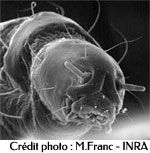
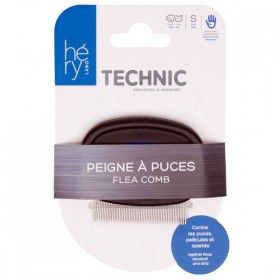
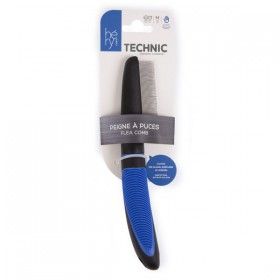
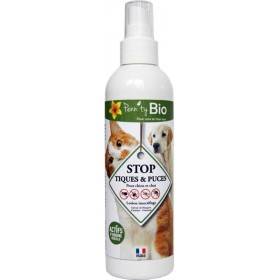
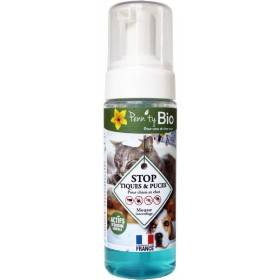
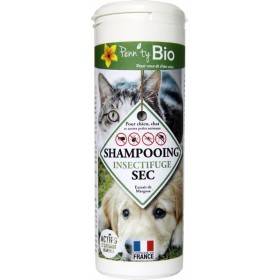
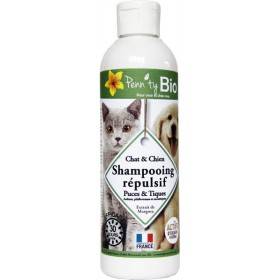
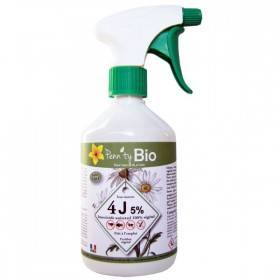

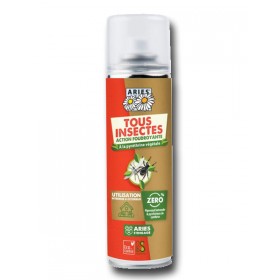
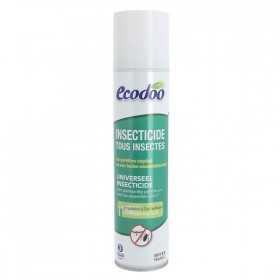
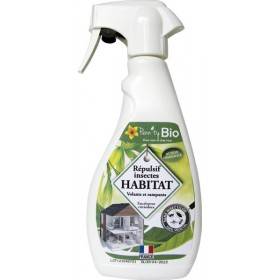
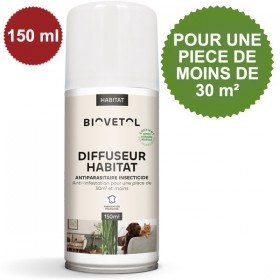
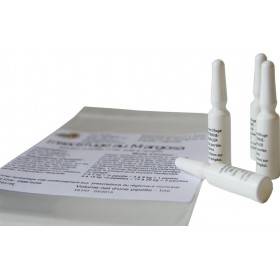
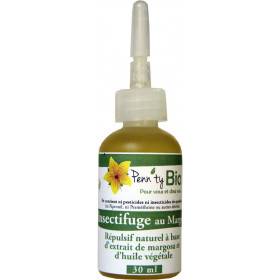
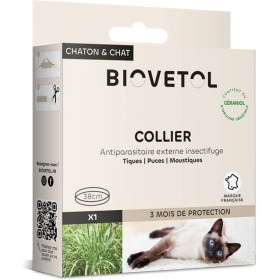
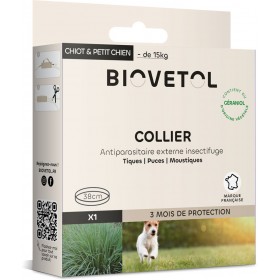
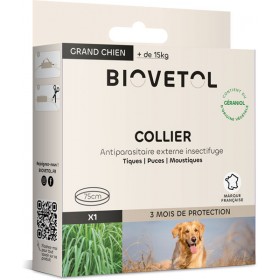
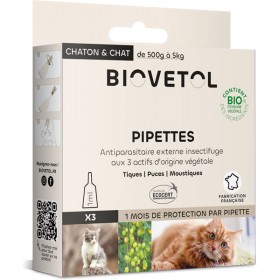
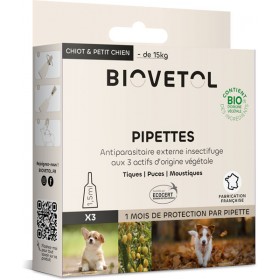
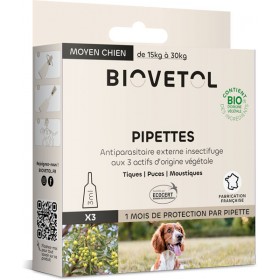
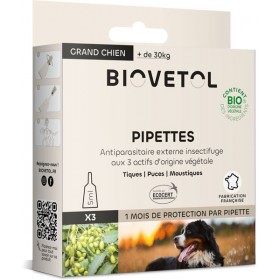
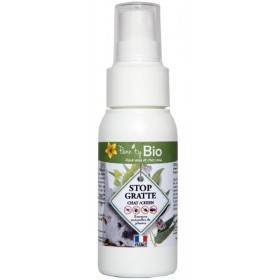
Customer reviews
Un diffuseur plus de 80 M², avec huile essentielles eucalyptus, vraiment formidable, on respire mieux et çà sent super bon. Le matin 1 heure, et le soir 2 heures. De jolies couleur, et pour les fêtes une jolie ambiance. Bravo.
PATRICK
merci de votre disponibilité et amabilité!
Eric
Cela fait plusieurs fois que je commande chez Penn'Ty Bio et je suis toujours satisfaite de la qualité des produits et de la rapidité d'expédition. Je recommande ce site !
Ghyslaine
Merci beaucoup pour votre rapidité et votre professionnalisme.
Julie
ANNE
Très satisfaite du produit.Rapidité et emballage très soigné.SERIEUX.
MARLENE
Envoi rapide, emballage au top, continuez comme ça... :-)
bruno b.
Pas encore essayé le produit, mais le site est très sérieux. Livraison dans un temps éclair, même si je suis en Belgique. Emballage soigné. On peut faire confiance.
Roberta
Bonjour, je voulais vous féliciter pour la clarté de votre site, la rapidité de la livraison et la qualité de l'emballage.
catherine R.
Site de grande qualité !
Rose Anne Marie
Commande reçue rapidement, frais de port raisonnables pour expédition à l'étranger et les produits sélectionnés au top! Merci!
Cédric Adolphe B.
Emballage au top. Livraison rapide et sans dégâts.
xxx
Très contente d'avoir découvert ce site internet ! Du conseil jusqu'à l'achat c'est super. J'étais très embêtée après l'apparition de petit insecte chez nous (des anthrenes) et c'est le seule site internet e-boutique qui a pu nous renseigner dessus et enfin indiquer les produits pour les éradiquer sans pour autant nuire à notre santé (mais en respectant les conseils d'utilisation bien sûr). J'ai reçu ma commande rapidement, et avec surprise un petit mot de remerciement personnalisé avec mon nom dessus. Des détails qui au finale font la différence. Un service de qualité rien à dire. Merci !
XX
J'adore ce site qui fait un vrai travail de sélection de produits que je ne trouve pas ailleurs et sur une large gamme. Je recommande.
Veronique G.
Jean Claude
C'est extrêmement délicat de votre part d'avoir fait diligence. Je ne manquerai pas de recommander votre site et de souligner votre gentillesse. Encore merci
Michel
Commande facile, livraison impeccable et produits fiables. Merci.
Isabelle
Site très pratique. Commande aisée. Suivi régulier. Délai de livraison respecté. Colis très soigné. Tout est parfait.
Nicole
Personne disponible, de très bon conseil suite à des punaises de lits dans mon habitation, les produits sont efficaces car depuis aucune punaises et la vie à repris son cours ... merci pour tout
Nathalie
Un super magasin en ligne, avec plein de produits disponibles.<br /> L'envoi a été très rapide et soigné, avec une très bonne communication à chaque étape. Bref, une adresse à connaitre et à garder ! Merci !
Pab57
Je tenais à vous remercier pour votre service de qualité, une livraison toujours rapide, des colis bien emballés - qui évitent fuites et casse, ainsi que pour le petit mot personnalisé joint à chaque commande, c'est toujours très agréable.
Isabelle G
Contente de voir que d’autres alternatives naturelles aux produits plus nocifs soient proposés. Entreprise sérieuse dont commandes sont très bien honorées. Merci.
Capzoe
Très satisfaite.
Louise
Fidèle à votre marque, je tenais par ce mail à vous féliciter vous et votre équipe pour votre longévité. Votre marque est toujours gage de qualité et sérieux.
Céline
Un accueil téléphonique très agréable et de très bons conseils. <br /> Merci à vous.
XX
Très bon site, très sérieux je recommande, produits de qualité et service après vente au top, de plus livraison des plus rapide et produits très bien emballés, tout est parfait
virginie
Très bien !
XX
Bravo et merci : produits de qualité et service TOP... continuez !...
XX
rien a redire, sauf, le montant des frais de livraison, un peu élevé.
XX
Livraison express. Colis toujours aussi bien préparé (cales, flocons, adhésif sur les bouchons qui risquent de couler). Bravo pour votre professionnalisme.
Isabelle
Commande tout à fait conforme et emballée avec grand soin.
Sarah
Envoie soigné et rapide.<br /> Merci pour le petit mot à la main.<br /> Très appréciable.
XX
Un grand merci pour cette commande envoyée très rapidement. Je recommanderais votre site
Elise
yvette
Livraison rapide et avec colis préparé avec soin :)
Florian
fidèle cliente de Penn'Ty Bio, je ne me fournis que chez eux.
XX
Commande bien reçue. Je suis tout à fait satisfaite. A bientôt.
Tania
service très efficace à chaque fois que j'ai commandé. aucune mauvaise surprise sur la livraison. je recommande
Agnès
Rapide, sérieux et qualité, produit correspondant à la description, très contente, je recommande votre site et vos produits.
Corinne
J'apprécie les services de Penn'ty bio. Un maximum d'étoiles pour eux.
Ch. D.
Dommage, les vendeurs ne savent pas lire les indications inscrites sur les produits qu'ils vendent
XX
Service rapide et efficace. Et Sympathique ! toujours un petit mot, ça fait la différence. Et c'est français en plus :). Je recommande.
XX
Merci à Penn'Ty Bio pour la qualité des produits, la réactivité de l’Équipe et le petit mot attentif qui accompagne les colis. Votre site est précieux !!
Veronique B.
Parfaitement parfait, je ne me fournis que chez Penn'ty bio depuis qu'ils m'ont débarrassée de punaises de lit.<br />
MARIE CLAUDE G.
Merci pour le geste commercial, et aussi pour les nombreux conseils et l'excellent service client.
Tristan L
Bonjour, colis bien emballé arrivé sans encombre, démarche écolo bien ancrée et petit mot perso. Merci à l'équipe de Penn'Ty Bio.
Sofi
Tout était parfait. Produit, prix, délai.
Marco
Merci pour cette première commande, envoyée très rapidement, et dans un petit colis, avec frais de port très raisonnables.
Valérie O.
J’ai bien reçu mon colis et vous remercie de votre rapidité. Bravo pour le geste écologique et durable. Emballage nickel ! Et mon chat a adoré jouer avec les billes jaunes !
Anouk
J'ai découvert ce site en cherchant de la terre de Diatomée. Livraison rapide. Très sérieux. J'ai mis la page dans mes favoris car j'ai repéré d'autres produits.
Isa
Très bien, je recommande cette boutique
Salomé
très bien je recommande.
Sylvie
Très bien...merci.
Olivier
très satisfaite de ma commande site vraiment sérieux livraison soignée et rapide ,les articles sont conformes a la description,je suis enchantée et recommande vivement
Marie Viviane C.
Toujours satisfait et pour les prix et pour les produits.
andré a.
Service très réactif, emballage soigné , livraison rapide. <br /> Rien à redire . Continuez !!
Sophie
Très réactifs entre la commande et la livraison. Je suis toujours satisfaite de mes commandes soigneusement emballées !
France L B
Bien, la majeure partie des produits sont efficaces. Je connais cette boutique depuis plusieurs années, je recommande ce site.
XX
Livraison très rapide et produits intacts à l'arrivée grâce à un emballage impeccable.
Etta
Très rapide pour la livraison en Belgique et sérieux. Merci<br />
Corinne
JM
Site très sérieux et personnel vraiment agréable. Envoi rapide. C est parfait !
Ingrid
Efficace rapide et à l'écoute. Diversité des produits. Efficacité des produits. Respect des délais de livraison et prise en compte des spécificités client PMR ( ce n'est pas toujours le cas). Site bien fait pour navigation et produits bien mis en valeur. Des promos et des bons de réduction cumulés en fonction des achats. Merci pour votre efficacité rapidité et professionnalisme.
xxx
merci pour le suivi de ma commande et les mails par lesquels vous m'avez tenu informée.
Zoé
J'ai bien reçu ma commande. Com' dab' , rapidité efficacité ...Merci
Sally
Sophie. A
Parfait.
Philippe
Super, livraison rapide, suivi très rigoureux, site de confiance, très sérieux à recommander... Merci pour tout.
Bernard
Rapidité de traitement et petit mot avec le colis très appréciable.
XX
J'ai enfin reçu le petit colis, hier. Il a mis un mois pour me parvenir, mais vous n'y êtes absolument pour rien, comme je le pensais, il a été mis de côté lors de la grève nationale. Je vous remercie d'avoir fait faire des recherches, j'ai reçu un mot de la poste.
Hervé
Produits performants. Très satisfaite de vos services.
XX
J'ai bien reçu ce jour, en bon état, les 2 diffuseurs galets. Merci aussi pour votre petit mot manuscrit me souhaitant un bel été. Fidèlement,
Annie
Après 2 traitements à 3 jours d'intervalle, j'ai réussi à éradiquer toutes les punaises de mon canapé. Produit hyper efficace que je recommande vivement.
Emmanuelle
Je tenais à vous remercier pour la commande que je viens de recevoir ce matin. Merci beaucoup et je n'hésiterai pas à recommander sur votre site.
Sandrine
Excellent!! Commande passée le lundi, reçue le mercredi!!! Les produits sont en plus de super qualité !
MADELINE
produit parfait.
René
Vos produits sont de bonnes qualités et les produits très bien emballés
Dominique
Parfait! Préparation et expédition de la commande hyper rapides. Emballage très soigné (j'ai acheté un produit fragile). <br /> Je suis très satisfaite!
Elise M.
Parfait !
Mireille
Merci pour votre démarche si respectueux de l’humain, des animaux et de l’environnement !
A.F
Totalement satisfait. Les produits sont super efficaces et tout est très bien suivis. Je recommande vivement ce site.
Stéphane N.
Très satisfait de Penn'Ty Bio : choix étendu,prix raisonnables délais de livraison rapides.
xx
Bonjour. Je souhaite vous remercier pour votre rapidité. Le colis est arrivé en bon état . Les huiles que nous avons commandées embaument la maison. Ce diffuseur est génial.
Christian
Correspond à mes attentes
Henry
C'est la deuxième fois que je commande sur ce site. J'ai découvert qu'il existait des verreries aux dimensions différentes. Mon diffuseur étant ancien, j'ai chercher le modèle le plus adapté et j'ai trouvé! Mon diffuseur fonctionne à nouveau
Christiane D.
Je vous remercie beaucoup de m’avoir fait profiter d’un acheminement par Colissimo alors que rien ne vous y obligeait, sauf votre conscience professionnelle, chose rare de nos jours et qu’il ne faut jamais manquer de souligner.
Cécile
Livraison rapide et produit conforme à la description. J'approuve à 100% le principe du recyclage des éléments d'expédition. Un produit fabriqué une fois soit avoir plusieurs vie. Bravo pour cette initiative.
Christophe
Bravo pour votre sérieux. Colis reçu très vite et produits impeccables. Belles fêtes de fin d'année
Mat
j'ai bien reçu la commande et je vous remercie pour votre efficacité.
Margot
J’ai découvert cette société en faisant une recherche sur Internet pour trouver un insecticide contre les sclérodermes. Je ne peux pas encore juger l’efficacité de chacun des produits par contre je suis très satisfait de la rapidité et de la qualité d’expédition, ainsi que du sérieux de la société. J’ai même reçu un petit échantillon est un mot personnalisé j’ai trouvé ça très sympa! Merci beaucoup et bonne continuation pour votre société que je recommande déjà.
BJ79
accueil téléphonique personnalisé réactif compétent et bienveillant, livraison rapide et conforme. BRAVO merci pour la qualité de votre travail
Annick
Suite à un précédent message notifiant une erreur de produit à la livraison, Penn'Ty bio m'a fait parvenir à titre gracieux le bon produit. Merci
Martine
Site sérieux. Bons produits.
Magali
Envoi très rapide, personnalisé et soigné. Merci
XX
Commande reçu en 2 jours, impeccable. Tous les produits emballés avec le plus grand soin, petit mot personnalisé! Et encore un petit savon bio au parfum délicieux comme cadeau!! Merci Penn'Ty Bio !!
Orchidée
Livraison rapide, emballage plus que parfait, le diffuseur NEOLIA est merveilleux pas bruyant, fonctionnement idéal. Merci PENNTYBIO pour votre sérieux, site web à recommander.
CLAUDE
Merci à Penn'ty bio d'avoir garder beaucoup de produits de la marque Lerutan et pour le sérieux dans la préparation et l'expédition des colis. Je recommande.
SR
j'ai reçu mon colis aujourd'hui, merci c'est très rapide et sérieux.
Clara
Bons produits. Fonctionnent très bien.
xx
Les produits achetés sur le site sont de très bonnes qualités, et j'ai été très bien conseillée. Je recommande !
Aurore
Très contente de vos produits.
nathalie G.
Colis très bien protégé service rapide. Merci. Site très sérieux .
Elios R.
Les produits ont été très appréciés par la destinataire. <br /> De plus quand on pose une question, on a toujours une réponse, un conseil très rapidement. Merci pour votre réactivité
xxx
Rapidité, emballage nickel et écologique, mot de remerciements personnalisé, produits au top....j adore....je suis une nouvelle cliente conquise. Un grand merci...
Hélène P.
Je voulais vous remercier +++ pour votre gentillesse et surtout... votre compétence. C'est vraiment de l'excellent travail... j'ai été bluffée :-)<br /> Renseignement téléphonique 10/5 - produit 10/5... encore merci
Maryse
En cette période d'avant Noël, je craignais que me colis arriverais en retard. 48h après mon achat, c'était dans la boîte aux lettres. Du coup, je suis large pour mettre mon achat sous le sapin. Merci à vous
Art4
Tout est parfait à chaque fois. L'attention portée va même jusqu'au petit message, c'est agréable. Fidèle aux produits et au site plus que jamais.
xx
Merci. Je tenais à vous faire part de ma grande satisfaction. Je suis enchantée par les produits et par le service. Salutations et bonne continuation,
Odile
Parfait comme d'habitude
Sylvain
Excellent article sur les diffuseurs d'huile essentielles ! grâce à lui j'ai pu faire mon choix basé sur une excellente analyse de votre part !
Laurence
Site intéressant. Je l'ai découvert, en fait. Produits ménager éco-responsable. Bon pour la maison et non agressifs. Merci.
Mydiadao
Ma commande s'est déroulée sans aucun problème avec une livraison rapide et soignée. La satisfaction est au rendez-vs ! Continuez ainsi ! Merci et cordialement !
Etoile 07
je vous remercie pour vos services, c'est très agréable d'être informé de la sorte. colis bien reçu Merci pour la rapidité de la livraison
Bernard
Très satisfaite de ma commande chez Penn'ty bio. Site très détaillé, produit reçu rapidement, message manuscrit très sympathique. Je recommande !
XM
Très satisfaite des délais, les produits sont bien emballés et le petit mot sympathique est fort agréable!<br />
Sylvana
Livraison très rapide et produits bien emballés.
Catherine
Commande et livraison rapides!<br /> Rien à dire, c'est parfait !
Christine
Livraison très rapide et colis emballé soigneusement.Site à recommander.
isabelle d.
Fiable, et très bons produits , Service après vente efficace et sympathique.
Vilma V.
Juste un petit mot pour vous remercier de votre disponibilité et pour vous dire également que je suis très satisfaite des produits que j'ai acheté, ils sont vraiment efficaces.
Barb.
Excellentes prestations. Les produits sont formidables, l'emballage aussi. Les délais d'expédition compétitifs. Je recommande vivement Penn'Ty Bio à tous ceux que l'état de la Planète pour les générations futures inquiètent.
XX
Bravo ! je vous félicite pour votre efficacité ne manquerai pas de vous conseiller. Merci à la prochaine commande
Anthony
Bonjour Monsieur,<br /> Nous nous étions parlés au téléphone il y a quelques années. Bravo pour l'évolution de votre site et vos dossiers instructifs. Vos produits aussi sont très bons. Bonne continuation, bien cordialement.
Marina
Je suis arrivée sur votre site en cherchant un diffuseur que je viens de commander, mais je voudrais vous dire que votre site est très intéressant, bien fait. Vos dossiers sont enrichissants merci
Joelle
Service très professionnel et très rapide. A conseiller fortement.
Didier M.
Très satisfaite. Merci.
CM
Cliente depuis plusieurs années. Super service, réactif, cordial. Les produits sont excellents.
Christine
Produit de qualité conforme à mes attentes, envoi rapide et soigné, très bien.
Anne
Livraison rapide et très bien emballé et protégé. Très bonne efficacité. <br /> <br />
XX
Service de qualité, suivi rigoureux et rapidité au rendez-vous. Mon colis est arrivé vite même avec un paiement par chèque. Les produits sont très fidèles à leur description et pour un coût serré. A recommander fortement.
Vincent
MOI JE DIS INCROYABLE !!!<br /> Plus que mieux d'une rapidité de dingue ! bravo et le colis impeccable surprotégé.<br /> Que toutes les entreprises prennent exemple sur vous. merci
AURELIE A.
livraison rapide, produits bien enveloppés avec juste un petit bémol : pour l'imperméabilisant dont le couvercle n'était pas bien fermé.
Alain
Tout va bien. Bonne année 2021.
Bernadette M.
Juste ce petit mail pour vous dire que j'ai bien reçu votre colis et que mon patron est enchanté ! Ca embaume les huiles essentielles dans le bureau et... ça ne fait pas de bruit ! Encore un grand merci pour votre gentillesse et votre souplesse commerciale.
Sonia
Livraison toujours rapide. J'ai expérimentée le service après vente qui à été excellent avec une réparation rapide et sans frais. Je recommande vivement Penn'Ty bio
Nadine
Site intéressant proposant de bons produits, attractifs et respectant la nature. Le regret c'est le prix de certains articles.<br />
Catherine
Comme toujours service "au top" réactivité, qualité produits... BRAVO et merci pour la qualité de votre travail
Annick
Merci pour votre geste que j’apprécie.<br /> Cela fait plaisir de retrouver l’esprit commerçant de proximité chez un vendeur en ligne. Je surveillerai attentivement cette nouvelle livraison.
Philippe
Service clientèle très réactif en cas de difficultés. Livraison rapide. Emballage des produits fragiles excellent. Maison sérieuse, je recommande.
Marie
Livraison rapide , le tout correspond à mes attentes.
Julie
Impeccable.
Christine
Efficacité de la livraison , très rapide . Produits livres en parfait état . Très bien emballés . Merci.
Geneviève
Commande bien reçue;je suis tout à fait satisfaite;à bientôt
Sonia
Une utilisation de vos produits a suffit pour nous débarrasser des poissons d'argent. Merci.
Matthieu
Les produits sont de bonne qualité. Leur prix est raisonnable. Ils sont livrés rapidement, et en bon état.
XX
Je suis ravi de trouver les produits de qualité et d ‘efficacité incomparable.
Denitza K.
Super efficace !!!
xx
Très bons produits, service rapide et de qualité, rapport qualité/prix intéressant. Je recommande vivement.
Alain
MERCI au personnel à l’emballage !!! Ma dernière commande était super bien emballée. Elle a résisté aux (épouvantables) chocs subis pendant le transport. Merci
Veronique
super emballage écolo...bravo !
Isa
Toujours aussi "réactif" et efficace<br /> Bravo et merci pour votre professionnalisme.
Annick P.
Tout est parfait : la qualité des produits, la rapidité d'expédition, la qualité du colis. Je suis enchantée et resterai fidèle à ce site.
Dominique
Cliente fidèle depuis plusieurs années, je ne peut que recommander ce site. Tout est parfait. Tous les produits au top, rapidité d’envoi, gentillesse, allez y les yeux fermés vous ne serez jamais déçus.
Marité 06
livraison rapide ,prix raisonnable , produits super efficace j'ai vite calmé mes douleurs lombaires ...enfin soulagée . Merci pennty bio
JEANNINE
Rapidité de livraison. Très bon produits. Merci
Mélina
Excellents services, très serviable
XX
Livraison très rapide; Tout était parfaitement emballé. Je referai appel à vous.
JV39
Site très réactif livraison rapide le produit Stop tique et puce est parfait sauf le pulvérisateur.
Danielle B.
Explication, commentaire et livraison en un temps record, tout était parfait, même le petit mot de remerciement écrit à la main ! Merci beaucoup
Monique S.
Modèle conforme bien emballé délai respecter continuer comme ça parfait.
Carlos
J'ai reçu mon colis hier. Merci de vos démarches,
Sam
Merci pour votre efficacité et votre gentillesse, commande, livraison, petit mot agréable, tout était parfait !
Sylvie
C’est la première fois que je commande sur ce site et pas déçue livraison rapide de ce produit que l’on ne trouve pas partout. Je recommande
Patrick
J'adore. Très grande diversité de produits, les explications sont simples et complètes.Quand aux colis, ils sont extrèmement bien protéger. Un grand merci.
Nadine
Des produits très efficaces quand on suis dans l'ordre le traitement. Un léger petit bémol sur le spray insecticide, si possible essayer de trouver un spray plus puissant et plus large pour une diffusion optimale dans les coin et recoin inaccessible. Sinon tout est nickel est une excellente qualité de résultat.<br /> PS: Il faut prendre tout les produit pour un traitement efficace en foyer privé (maison).
Florian G.
Colis bien arrivé. Emballage remarquable. Diffuseur très joli, très efficace et peu bruyant avec de la couleur qui change. Très satisfaite de la commande.
Sabrina
Je suis vraiment très satisfaite de la prestation de ce fournisseur : délai de livraison très rapide et emballage des produits réalisé avec un maximum de soin. Bravo !!
Eliane
Bon choix, bons conseils et service livraison très rapide. J'aime faire mes courses sur ce site.
FDA
Produits conformes aux descriptifs. Délai de livraison respecté. Satisfaite du nébuliseur qui est superbe.
VR
Alex
Envoi rapide. Rien a redire.
Marie France
1ère commande. Très satisfaite : Colis expédié très rapidement et bien emballé. Merci pour votre sérieux.
Ghyslaine
Excellent service après vente après un problème d acheminement de colis par la Poste. Une relation client de très grande qualité. <br /> Cordialement,<br /> <br />
PV
Bon service et bon produits
Odile R
Bien reçu. Bravo pour votre extrême rapidité. Merci
Magali
Site de produits naturels et bio très bien fait, agréable et fiable. beaucoup de produits de qualité.
Anne Marie R.
Excellents produits. Excellent service.
James T
Nous sommes très satisfaits du service client : mot personnalisé dans le colis, disponibilité du service après-vente... Nous souhaitons à votre société un succès croissant.
Sara
Avec les trois lettres BIO dans votre nom, je ne m'attendais pas à découvrir des billes de polystyrène comme matériaux de rembourrage. Il y a certainement plus écolo !
Michel D.
Livraison rapide. Produits bien emballés.
Bruno
Je confirme efficacité sur la préparation et expédition du matériel. un grand merci
Jeremy
Je suis cliente depuis de nombreuses années. Toujours satisfaite du site, des produits et de la livraison.
martine O.
Envoi rapide et soigné, produits efficaces et réponse rapide à mes questions. Je recommande.
xx
Une boutique en ligne, sympa et très réactive. On apprécie surtout la livraison express. Pas besoin d'être américain pour livrer dans des délais de champion !<br /> <br />
Daniel de Paris
Comme d'habitude, envoi soigné, produits performants, Merci.
XX
Site internet complet, beau et facile d'utilisation<br /> Commande complète et correcte.<br /> Commande emballée a la perfection avec du matériel recyclable, compostable<br /> Délai d'envoi respecté même a l'étranger (Pays-Bas)<br /> Mention spécial pour le petit mot personnalisé ++<br /> On sait pourquoi on commande chez Penntybio depuis 10ans :)<br /> Bonne continuation
Jennifer A.
Très bon produit, conforme à la description.
MICHELE P.
Excellente réactivité !!! Produit en stock, commandé le 23 dec à 8h30, recu le 24 dec à 9h30. On peut guère mieux faire ! Super communication avec le vendeur.
Xavier
en comparaison d'autres produits employés précédemment, je trouve les vôtres beaucoup plus efficaces et cela sur le court terme ,disparitions des odeurs en combinant les produits suivant vos conseils .
XX
Produit anti puce extrêmement efficace !<br /> Le vendeur a pris une demi-heure de son temps pour m'expliquer absolument tout ce qu'il y avait à savoir sur le produit, de la composition a la mise en œuvre.. Bref au top ! Je recommande donc vivement Penn'ty !
Louis
J'ai été TRES bien conseillée lors du contact. Produit naturel donc c'est parfait.
Lilla
Produit performant et raisonnable au niveau prix. Je recommande
XX
Louise
Pennty Bio? Einfach genial. Super rapide , bon produits, super service-livraisons. Je vais recommander bientot =)
xxx
2 commandes à mon actif et jamais déçue. Vous avez gagné une cliente régulière :) Merci pour votre sérieux et le contenu bien rempli de votre site ! c'est super d'avoir une description hyper détaillée de chaque produit.
clara
merci pour votre professionnalisme. Merci pour les produits envoyés dans de bons délais. Merci pour la qualité de vos produits
Marcelle
Très satisfait du site livraison rapide.<br />
Michel
Merci pour tout le soin que vous mettez pour une livraison individualisée, chaleureuse et aussi peu impactante que possible sur l'environnement !
Sandra
Grande gentillesse et efficacité : que demander de plus ? Merci !
Chantal M.
super contente, j'y trouve facilement les produits dont j'ai besoin et le service est impeccable et gentil !
Hélène S.
Je me permets de vous écrire un petit mot afin de vous dire que votre site est très bien fait.
Tom
Boutique sérieuse. Commande arrivée très rapidement. Merci pour votre gentil mot avec la facture.<br /> <br /> <br />
I Defoy
Un grand merci pour la qualité et la rapidité de votre réponse.
Tony
Une entreprise fiable, efficace, de confiance, chez qui je recommande de faire ses achats.
S.
Everything was very nice ! Keep handling your customers likes this!
xxx
Très bon site. Navigation facile. Les commandes sont expédiées rapidement comme annoncé. Aucun problème depuis que je suis cliente. Je recommande Penn'ty bio.<br />
Elvyne
Produits facile à utiliser, efficaces et finalement pas plus onéreux, à l'usage que des produits issus de la pétrochimie. Service livraison impeccable. Je recommande +++<br />
XX
SATISFAITE
ANNE
Première commande chez Penn'Ty Bio : <br /> - navigation sur le site = 5/5<br /> - préparation du colis = 5/5<br /> - Prix compétitifs = 4/5<br /> - Qualité des produits sélectionnés = 5/5<br /> <br /> Vendeur à recommander.
Gaëlle
Client depuis des années Produits de qualités et surtout qualité de service.
XX
Très bonne adresse où l'on trouve des alternative aux produits chimiques notamment contre les insectes. Le service client est également de très bons conseils.
ck
livraison rapide, produit conforme.Prix séduisant.
XX
Très satisfaite par Penn ty bio. En effet, suite à un produit défectueux ( housse matelas) , j'ai aussitôt reçu un bon de retour pour renvoi gratuit en colissimo et ai reçu la nouvelle housse dans les 48 h, avant même le renvoi de la première housse. Merci pour la réactivité et la confiance de cette entreprise.
dominique B.
L’esprit commerçant de proximité chez un vendeur en ligne !
Philippe
Bon produit , envoi rapide.<br /> <br /> <br />
Christine
Bonjour <br /> C'était ma première commande sur votre site et j'en suis très satisfaite <br /> Je vous remercie pour votre professionnalisme (site, prise de commande, livraison) ainsi que pour le petit mot qui rend le tout humain. Très belle journée.
CG
J'ai toujours été satisfaite de mes commandes chez Penn'ty bio. Rapide efficace. Surtout les caractéristiques des produits est claire et complète. et le site contient beaucoup d'informations sur les différentes gammes. Merci pour votre travail et votre activité.
XX
Merci et bravo pour la qualité des produits et du service toujours aussi efficace et performant.
Annick P.
Excellent site. Très à l'écoute. Livraison rapide. Problème avec un piège à guêpes un autre m'a été livré très rapidement. Chapeau et très agréable de tomber sur des gens compétents.<br /> Encore merci.
XX
J’ai bien reçu le nouveau diffuseur fonctionnel après essai et je vous remercie pour votre confiance et votre rapidité sur le traitement de mon problème. Ce n’est pas tous les jours que l’on voit un SAV aussi efficace !
Florent
colis reçu ce jour, merci pour le flacon offert
Andrée
Commande bien reçue . Je suis très satisfaite Merci pour votre sérieux
LILIANE
Envoi rapide et soigné. Emballage ecoresponsable. Je suis ravi d’avoir trouvé des pièces de rechange pour les diffuseurs à huiles essentielles!
Ina L.
Noëlle G.
Je vous remercie de votre professionnalisme et de votre réactivité.C'est loin d'être toujours le cas lorsque l'on commande sur internet.
Gaëlle
Mon avis sur penntybio, très bon produit sur ce site pas une gamme monstrueuse mais que du très bon, et pareil pour les livraisons ultra rapides et le excellent sav si besoin. Je recommande vivement. Client depuis 2018 aucun soucis.<br /> <br />
thierry g.
Bon site, fiable, rapide et efficace.
Leo L.
Site pratique, compétent, prix corrects. Un envoi très rapide, et je dirai "parfait".
Greg
Merci à tanteOdile pour m’avoir fait découvrir votre site. Depuis je suis une cliente assidue. Très satisfaite de la rapidité des envois, de la qualité de vos produits qui sont par ailleurs très bien détaillés par leur composition et leur mode d’emploi. Une amie vous a rejointe également avec la même satisfaction <br /> Continuez.
Marité D.
Bons produits conformes à mes attentes et livraison au top. Je recommande vivement.
Chantal P.
je viens de réceptionner ma commande. Tout est ok. Merci pour ces produits respectant l'environnement et l'être vivant.
Anatole
La livraison est rapide, je n'ai jamais était déçue de ce site, et les produits sont pas chers et de très bonne qualité!
Patricia
Hélène
J'apprécie depuis de nombreuses années la qualité de vos produits et le sérieux de votre site. Une petite mésaventure avec un diffuseur me permet de vous féliciter pour la réactivité de votre SAV. Bravo !
Thierry G.
excellent.
XX
Merci beaucoup pour la rapidité avec laquelle vous m'avez fait parvenir le diffuseur.
Bichette
Super produits, envoi rapide et soigné, conseils et échanges courtois ! Une jolie boutique en ligne pour acheter en toute confiance ! <br />
Patricia
Livraison rapide et fiable, dès que le chèque a été reçu. Produits de bonne qualité.
Chantal H.
Livraison conforme et rapide. Les produits sont emballés dans des emballages recyclables, voire compostables : j'ai beaucoup apprécié. Je recommande ce site.
Patrick
Livraison très rapide. Bravo pour la réactivité
François
Je parlerais de vous a mes amies car vos produits sont vraiment excellents. Bien a vous et tous mes remerciements.
Patricia
Rapide, sérieux, très bien emballé, un sans faute.Merci.
L.H.
On ne peut pas toujours faire confiance à des sites de ventes sur le web, mais sur Penn'Tio, j' y viens les yeux fermés. Excellente communication avec le service clientèle, un suivi sérieux. Je remercie chaleureusement toute l' équipe.
Sergine T.
Excellent site rapide et efficace. Descriptif intéressant.
XX
Produits utilisés depuis très longtemps, toujours la même qualité ! Je recommande, les délais de livraison sont très courts, produits très efficaces.
Laurence
Bon produit. Merci Penn'Ty Bio. Un seul passage dilué à 5% et les puces ont disparus. Il en restait deux ou trois qui ont dû se perchés pendant le traitement mais sinon c'est performant.
Axel
Une grande compétence, Monsieur Dufil est très professionnel et sait soigner ses clients. Quand à la gamme de produits proposés, elle est parfaite et complète.
Alain A.
Très bien , bon produits, La prochaine commande avec plaisir, livraison très rapide.<br />
Rainer
Excellente communication, service très rapide (même à l'étranger), emballage parfait ...
Jacques N., Belgique
Ravie de découvrir un site qui présente des produits de qualité avec une vraie démarche éco responsable à des tarifs intéressants.
XX
Bonjour Sophie & QUENTIN, Merci pour votre petit mot. . . . Ça fait chaud au Cœur de voir qu'il y a encore des Gens Comme VOUS sur cette planète ! Le monde devient de plus en FOU ! ! ! Cordialement.
Dominique T.
j'ai reçu mon colis aujourd'hui, merci c'est très rapide et sérieux.
Nathalie
Très satisfaite de ma commande. Emballage soigné et envoi rapide. Merci beaucoup pour votre professionnalisme !
Sophie
Très bons produits je les recommande.<br /> Merci à Pennt'ty Bio pour tout, aussi bien pour les commandes et les emballages.<br /> Bravo Pennt'ty Bio.
Bernadette G.
Tout est parfait de la commande à la réception. Commander jeudi et reçu samedi. Et très contente de mon achat . Je recommande
Nadege M.
Client depuis de nombreuses années, je suis satisfait à la fois de la boutique et de pratiquement tous les produits achetés.
Jean-Claude
Tout était parfait l’envoi la livraison merci beaucoup
XX
J'ai reçu le colis, merci beaucoup de votre promptitude et bonne continuation.
Louise
C'est ma première commande chez Penn'Ty Bio, et ce ne sera pas la dernière.<br /> J'étais à la recherche d'un nouveau diffuseur d'HE et, après discussion avec Quentin, mon choix s'est arrêté sur l'Elixia (Direct Nature) qui est d'une efficacité redoutable et d'un silence absolument surprenant.<br /> La livraison s'est faite en 72h en point retrait avec un conditionnement hyper sécurisé.<br /> Lors du déballage, j'ai constaté un léger défaut de finition sur la verrerie.<br /> J'en ai fait part à Quentin par texto avec photos à l'appui.<br /> Il m'a aussitôt recontacté pour me proposer un envoi d'une nouvelle verrerie dès que disponible.<br /> Un professionnalisme et un sens du service exemplaires qui font de cette enseigne une valeur sûre.<br /> Penn'Ty Bio est vraiment la boutique en ligne qu'il vous faut connaître.<br /> Je vous la recommande vivement.
Jean-Yves S.
Rien à redire, de la commande à la livraison.
XX
Quel dommage pour le produit manquant, je vous remercie pour le remboursement.
Didier
Penn'Ty Bio wonderfully served our family in Switzerland so that we could try the range of Totemsavon products, which are such caring, loving, and consciously manifested creations :)<br /> <br /> By allowing a shipment to Switzerland and elsewhere, I am sure so many more people would be able to benefit from the beautifully selected product portfolio in Penn'Ty Bio and all, together, make a conscious leap by using and demanding a way more purer approach to anything we interact with.<br /> <br /> Thank you so so much Penn'Ty Bio!<br /> <br /> In 8 Love We Heart Trust<br /> <br /> Miguel Ángel
Miguel Ángel
Merci et surtout, continuez, c'est rare de trouver sur internet une relation aussi personnalisée sur un mode aussi agréable.
Sabine
Maryse
Cliente depuis plusieurs années, j'apprécie toujours ce site. Meilleures salutations.
France
Boutique très sérieuse avec un envoie rapide et des produits super efficaces.
XX
Produits d'excellente qualité, arrivés rapidement, et conformes à leurs descriptions.
Michelle G.
Colis parfaitement emballé et produits conformes. 1 des produits était très fragile et est arrivé en excellent état, merci :o) Pourquoi achetez à l'étranger alors qu'on a de si belle s entreprises en France? Tarifs identiques ou moins chers que chez Amazon ;o)
Stéphane C.
clair net précis. merci
jannick
Franchement, Penn'ty bio, c'est top ♥<br /> Quentin est super réactif, de très bons conseils. Encore merci de votre efficacité.
Hélios ☼♥
Bon produit mais frais de port un peu cher.
Marie Paule
Au fil de mes commandes (j'en suis à la 5 ou 6ème) décidément, du sérieux et de l'écoute ! chaque fois que j'ai eu un petit problème: contact immédiat, réponse immédiate, et tir rectifié illico ! Dans le top 5 de mes sites internet !
Vincent
Merci beaucoup le colis est arrivé à la poste hier et je te retire aujourd'hui Merci pour votre efficacité et votre rapidité
Ingrid
Bon rapport qualité-prix. Envoi rapide et sécurisé !
Chrile
Client depuis plus de 10ans. Toujours satisfait du matériel propose. Boutique sérieuse prix compétitifs livraisons et suivis rapide.
XX
Commande reçu très correcte, très bon matos, encore merci et bonne continuation.
Dominique et Monique A.
Jean-Yves
Juste un petit mot pour vous remercier du message accompagnant mon colis ! Je croise les doigts pour que les produits marches mais entre-temps, je voulais vous remercier et en profiter pour vous souhaiter à mon tout un joli printemps.
Rose B.G
Pennty bio prends le temps de renseigner et donne de très bons conseils.<br /> Les produits sont emballés soigneusement et la préparation des commandes hyper réactive. Je recommande les yeux fermés !
Mattloumag
Merci beaucoup pour l'info, c'est rapide chez vous, très appréciable!
Denis
Livraison rapide , produits de qualité, je recommande Penn'Ty Bio.
XX
Je suis une amie de vos parents et suis toujours très satisfaite de tous vos produits. Ne changez rien et bonne continuation.
Marité D.
Excellent site d'achat. Très rapide et que de bons produits.
James
comme toujours excellente réactivité, livraison très rapide et qualité produits TOP. Merci pour votre compétence.
Annick P.
Je voulais non pas faire une réclamation; mais vous féliciter pour vos produits que j' ai bien reçue, et également pour la rapidité de votre envoi ce qui est plutôt rare dans d'autre site.
Jérôme
Je voulais juste vous remercier. J ai reçu mon répulsif " lézards" aujourd'hui, un petit mot super gentil joint à ma commande ça fait plaisir. J espère que ça va fonctionner. Bonne journée à vous et merci.
Cynthia
Penn' Ty Bio, c'est ma référence depuis 10 ans au moins. Je ne commande mes produits de toilette et d'entretien que chez eux. Les marques et le service est irréprochable.
GAELLE
THIERRY
trés satisfaite de ma commande,( produit, et livraison,rapide ) MERCI
Danièle M.
Envoi très rapide et bravo pour votre site de reconnaissance des insectes nuisibles.
Brice
Commande reçue rapidement, très bien
XX
Très satisfaite. Je recommande cette société sérieuse. bon suivi de la commande.
Sandrine
Très bon produit juste ce qu'il faut à prix attractifs Envoi rapide.
xx
Après un souci sur l’article livré, le site a fait preuve d’une excellente communication (simple et efficace par sms) qui m’a permis de me faire livrer un 2nd article par la marque très rapidement. Parfait !
Pierre
Sav très réactif et efficace suite à avarie durant transport. La livraison du produit en remplacement du colis défectueux à été particulièrement rapide. Merci.
Valérie
Bravo ! je vous félicite pour votre efficacité et ne manquerai pas de vous conseiller.
Nicolas
Pour ma part j'ai été satisfaite de la réalisation de ma commande et du délai de livraison. Je recommande votre société.
Nelly
Je suis très satisfaite de mon échange avec le service client (personne à l'écoute, de bon conseil). Envoi rapide et soigné, avec un petit mot sympathique de l'équipe, le top!
XX
Après essais de divers produits, votre insecticide 4J est le seul à être venu à bout des puces ramenées par le chat de la maison. Livraison rapide par chronopost
JEAN MARIE
BIEN,CONTINUEZ COMME çà.
XX
Très bien ! envoi rapide et conforme à ce qui est annoncé.
Jacqueline S.
Efficace, livraison rapide.<br /> <br />
H
Très contente des produits de qualités et une commande reçu très rapidement. Merci
PATRICIA A.
Beaucoup de soins dans la commande reçue. Je recommande!
XX
très bons produits et service commercial très performant, continuez sur cette voie, merci.
Annick
Infestés de puces de parquet, le produit a agi en moins de 24 heures. Livrés en tout autant de temps. Le seul produit qui ait fonctionné et en plus archi cool pour la nature.
Nicolas
J'ai passé ma première commande, chez vous il y a trois jours à peine et ce matin, je reçois mon colis.
Sophie
colis dans les temps,emballage parfait,super accueil téléphonique pour renseignement, je recommande ce site.
ROSCO
Françoise
Livraison rapide et soignée. J'utilise les produits bio qui sont de très bonnes qualités. Un savon m'a été envoyée par erreur à la place de celui commandé et il m'a été remplacé très rapidement. Bravo pour leur réactivité. Je recommande fortement ce site.
Liliane
Après la découverte des punaises de lit dans 2 chambres de notre vieille maison, j'ai trouvé votre site. le dossier m'a été très utile et je suis très contente d'avoir trouvé des produits moins toxiques que ce que proposent les autres sites de vente.<br /> Je vous remercie d'avoir répondu à mon mail car c'est un peu l'affolement quand on découvre chez soi des punaises de lit.
Françoise S.
Merci pour vos conseils avisés. Et merci pour vos produits de qualité.
Loïc
Parfait. Rien à redire. Extrêmement efficace.
Quentin
Je trouve l'essentiel sur le site à des prix défiants toute concurrence. Continuez comme cela.
XX
Entièrement satisfaite.
Ch. D.
Parfait comme site, commandes faciles à faire et livraison rapide !
Cindy
Jamais déçue : les produits correspondent à la description et sont livrés rapidement.
Mireille
Je vous remercie pour vos services. C'est très agréable d'être informé de la sorte.
Anthony
Service rapide et efficace. Bons produits
XX
très bien livraison dans les délais, colis intact, bon produit.
Martine
Bon produits et service !
Rose-Marie
Toujours très bien et parfaitement emballé ! Merci<br />
Valérie
J'ai bien reçu mes articles et je vous remercie pour la livraison rapide et impeccable !
Françoise
C'est vraiment magnifique et ce cadeau a plu, je commanderais pour Noël.
Martine
sérieux
XX
Livré hyper vite. Bravo !
Mick
Je viens de recevoir la pastille noire aujourd'hui et je vous remercie de votre envoi gratuit (ce qui est rare de nos jours).
Laurence
Un grand merci pour votre professionnalisme et la qualité de vos produits. Longue vie à votre site.
XX
Très satisfaite, merci.
Christine
Bons produits, emballage impeccable, livraison super rapide ! Parfait !
XX
Commande bien reçue ! Bien emballée ! ! ! Jolis produits ! Merci !
AYH
Bon produit, efficace et laisse une odeur plutôt agréable. Expédition rapide, emballé avec soins. Je recommande
Mary
Toujours impeccable, les produits, les services. Depuis que j'ai changé de facteur, plus de soucis. (Ça n'est arrivé qu'une fois!!!)
XX
Les produits commandés sont conformes à mes attentes. Quant à l'accueil au téléphone, il est parfait et nous avons toujours trouvé un terrain d'entente. Je fais confiance à Penntybio.<br /> Merci.
XX
Merci d'être à l'écoute pour notre terre et vos clients. Encore une fois je suis très satisfaite de ma commande. Et mes compagnons à 4 pattes sont ravis de se protéger en bio. Merci pour votre attention manuscrite en fin du bon de commande..
Raymonde julie L.
interressante. Beaucoup d'articles référencés. Après pour la lutte contre les punaises de lit, je ne suis pas sure de l'efficacité de certains produits. C'est un vrai fléau ces bestioles.
Francelyne D.
Site clair, envoi rapide, marchandises bien emballées, et un petit mot charmant!
SM
2 commandes à mon actif et jamais déçue. Vous avez gagné une cliente régulière :) Merci pour votre sérieux et le contenu bien rempli de votre site ! c'est super d'avoir une description hyper détaillée de chaque produit.
Magali
Produits de bonne qualité, naturels et efficaces, expédition rapide et bien emballée, sav très rapide suite à une erreur de ma part,
XX
Commande passée le jeudi soir, colis livré chez mon "commerçant-relais" le samedi matin. Quelle rapidité ! Du vrai professionnalisme !
Emeline
Merci pour votre envoi : rapidité, ponctualité, information de suivi du colis etc. Vraiment du bon boulot.
E.G
Bonjour, j’apprécie depuis longtemps votre travail : la qualité de vos informations et des produits que vous vendez.
Frederic
Service au top !!!<br /> Colis reçu très rapidement avec un petit mot manuscrit me remerciant de ma commande et de la confiance que je leur ai témoigné <br /> Suffisamment rare pour être signalé <br /> Je vous encourage toutes et tous à les soutenir en passant commande chez eux!!!!<br /> Longue vie à Penn’Ty Bio !!!!<br /> Ils le méritent
Pierre-Steph
Content des produits achetés, reçu rapidement et bien emballé. Merci.
XX
Claudine
Diffuseurs qui sortent vraiment de l'ordinaire, un envoi parfait - merci BCP
Anthony
Service de qualité, suivi rigoureux, et rapidité au rendez-vous. Les produits sont très fidèles à leur description et pour un coût serré. A recommander fortement.
JACKY
bravo pour votre réactivité et la qualité des produits
Annick P.
Merci pour votre sérieux et la réexpédition ultra rapide d'un achat non conforme (dont vous n'étiez pas responsable).
Marc
Marie-Noëlle
Produits livrés rapidement dans un colis non surdimensionné, les produits sont conformes à la description. Je recommande vivement ce site très bien fait !
Hervé
Dimanche soir, invasion de vrillettes du pain. Lundi matin, commande en urgence des produits verts adéquats. Mardi, livraison, traitement et fin de l'invasion.
Jean-Pierre
fiable et de bonne qualité pour les services et les produits :)
XX
Livraison ultra rapide, bien emballée. Produits au top. Parfait !
Caty
De très bons conseils, une livraison rapide et des produits de qualité !
Fabienne P.
Marie Aline Roux
Les produits achetés sont excellents. Ils répondent parfaitement à ce que je cherchais. Bravo pour votre site
Michel
I had a marvelous experience with ordering and everything ! Thank you for a great service.
XX
Très bon site avec de très bons produits et un soin particulier apporté à la préparation de chaque commande... De plus, Sophie et Quentin prennent la peine d'écrire un petit mot de remerciement avec la commande envoyée....c'est peu commun mais très sympa....:-)
STEPHANE P.
Livraison rapide et petit mot manuscrit joint au colis, vraiment très sympa! Merci et continuez, vous le méritez.
Jean-Pierre
Livraison rapide et bien emballé. Petit message manuscrit qui fait plaisir :)
xx
Je ne connais pas encore tous les produits mais contente de ce que j'ai commandé. En revanche un peu cher quandmême ce qui me limite.
xxx
Un grand merci pour la qualité et la rapidité de votre réponse.
Simon
Satisfaction totale. Entreprise au top. J'ai téléphoné le lundi matin, malgré que les contacts téléphonique ne sont que l'après midi, une personne très charmante m'a rappelé presque aussitôt pour mes donner les infos que je souhaitais connaître sur ma commande. Bravo. nous sommes mercredi et ma commande est arrivée. Encore bravo continuez comme ça.
Jacques M.
Un grand merci pour votre offre et votre professionnalisme. Pour un service en ligne, vous savez vous rendre proche de nous. Bravo et "suerte" !
Pierre M.
Très bon produit facile en entretenir, pas cher.
XX
Très bon site, du personnel sérieux et la livraison en temps et en heure. Merci
Marine T
Efficacité redoutable. enchanté.
Robert
Hyper cher :: très déçue du prix par rapport à la quantité de produit acheté. Sur le site internet, les flacons semblent grands, or pour 80 euros je me retrouve avec 4 flacons de petits produits insecticides... trop cher
xxx
Parfait ! Envoi rapide et produits de qualité. Merci pour le petit mot. Je suis très satisfaite !<br />
Julieanaïs
Très bon site. Envoi rapide. Prix moins cher que sur d autres sites. Bravo et bonne continuation.
Camille
Livraison efficace et bon contact oral avec mon interlocutrice.
Maussane
Site sérieux, proposant de bons produits, efficaces en particulier sur les punaises de lit, fléau actuel. Merci car entre les produits et les housses de matelas nous avons réussi à les éradiquer dans deux maisons à deux ans d intervalle. <br /> Bravo aussi pour la livraison la plus écologique possible.
L.C
Merci pour l'expédition de la pièce de verrerie qui a été recu cette fois sans casse. Meilleures salutations et à très bientôt sur votre site pour un prochain achat .
Louane
Très bons produits efficaces.
XX
Livraison en temps record à l'adresse indiquée en France puis départ dans l'océan indien. Reception des produits en quinze jours à l'autre bout du monde : ravie. Je vous laisserai les avis produits une fois utilisés. Le site est très bien fait et très agréable à utiliser. Le petit mot à la main dans le colis humanise la transaction, je l'ai apprécié. Je pense que vos produits sont très utiles et je vous souhaite une belle réussite et sur la durée.
Sylvie D.
J'ai bien reçu le diffuseur et j'en suis très content.
Paul
livraison tip top tant en temps et en qualité.
XX
Super !
Yann
Bonjour Sophie et Quentin,<br /> Je viens de recevoir ma commande et je tenais à vous remercier pour la rapidité de l'envoi, votre gentil petit mot et le petit présent qui sent bon et donne envie. Bel été à vous deux également
Geneviève
livraison impeccable, produit bien emballé et correspondant au descriptif, excepté pour la surface de diffusion, ma salle principale doit faire 25m2 maximum et ça ne se diffuse pas au-delà.
Pascale
Super produits accueil plus que parfait gentillesse. Livraison au top merci beaucoup
Christiane
Sav rapide et disponible. Au top
Severine
Site très sérieux, de très bons produits et la livraison est rapide.<br />
Isabelle
Félicitations pour la qualité de votre site & la valeur de ses informations ! Continuez ainsi ! On a besoin de vous !
Ronald
Vos explications par email ont été très claires et votre diligence dans le traitement de ma commande et de mes demandes est très appréciée.
Henri
J'ai été très déçue de ne plus trouver mon déboucheur dans mon biocoop habituel, et perplexe en apprenant qu'il était remplacé par un produit à base de soude...c'est comme ça que je vous ai trouvé sur internet.<br /> Alors merci pour le dépannage, pour le mot gentil qui accompagnait mon colis , et bravo pour le calage en amidon de maïs compostable!<br /> Bravo pour votre démarche et à très bientôt.
Cécile D.
Livraison très rapide. Notice livrée avec les produits ainsi qu un petit mot très agréable. Produits très efficaces, avec de l huile de coude, on en vient à bout. Le produit concentré nous a permis de tout éliminer. Par précaution, nous avons tout de même utiliser le spray. Dans une pièce, nous avons utilisé le fumigène. Pour les animaux, la mousse semble efficace. Dans quelques jours nous ferons le shampooing et plus tard les pipettes. Mais franchement après avoir utilisé d autres marques qui ne fonctionnaient pas, nous sommes ravies et nous recommandons ces produits. Merci
Virginie C.
Prix intéressants. Expédition super rapide à bon prix. Et tout ça de façon agréable !
Alexis M.
Un plaisir de recevoir les colis soignés et respectueux de la planète de Penn’Ty Bio. Merci
k.
J'ai bien reçu le colis sans aucun problème. Merci pour la rapidité et le sens du service.
Nicolas
Tout à fait satisfait de la qualité de la livraison ainsi que du produit commandé.
Régis
anne-marie B.
Excellent service et livraison rapide. A conseiller pour la santé des animaux (chiens et chats)
MICHEL
Produit conforme aux attentes.<br /> <br /> <br /> <br />
Alain
Commande reçue assez rapidement. Merci pour votre sérieux.
Émilie
Super, envoi rapide,bien protégé et petit cadeau !
xx
Toujours parfait, livraison, emballage, délai et gentil petit mot personnel pour me remercier de ma fidélité.
XX
Leave a review | See all